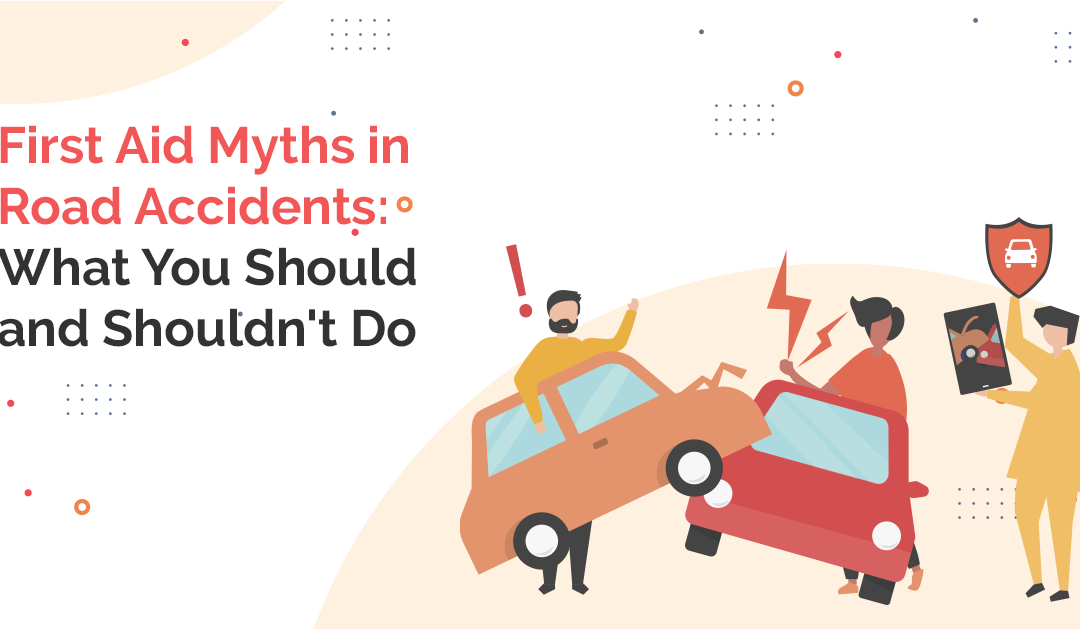First Aid Myths in Road Accidents: What You Should and Shouldn’t Do

In the chaos following a road accident, bystanders often step in to help, which can be lifesaving. However, not all first aid actions are helpful—some are based on myths that could do more harm than good. Knowing what you should and shouldn’t do during such emergencies can make a critical difference.
Common Myths and the Realities Behind Them
Myth 1: Move the Victim Immediately to Prevent Further Harm
Reality: Unless there is an immediate danger, such as a fire or explosion, moving an accident victim can exacerbate injuries, especially if they have a spinal injury. Instead, focus on stabilizing the person and calling emergency services.
Myth 2: Giving Water to a Conscious Victim Helps Them Recover
Reality: Providing water to an injured person, particularly one who may need surgery, can be harmful. Keep them calm and reassure them while waiting for professional help.
Myth 3: Stop Heavy Bleeding by Applying a Tourniquet
Reality: Tourniquets should only be used as a last resort and by trained individuals. Improper application can lead to tissue damage or even limb loss. Instead, apply firm, consistent pressure to the wound with a clean cloth to control bleeding.
Myth 4: If Someone Is Unconscious, You Should Shake Them Awake
Reality: Shaking an unconscious person can worsen their injuries. Check for responsiveness by gently tapping their shoulder and calling their name. If they’re unresponsive but breathing, place them in the recovery position to keep their airway clear.
Myth 5: Splint a Suspected Broken Bone Immediately
Reality: While immobilizing a fracture is crucial, improper splinting can worsen the injury. If you suspect a broken bone, support the limb in its current position without trying to straighten it, and wait for medical professionals.
Myth 6: Perform CPR on Anyone Who Is Unconscious
Reality: CPR is only necessary if the person is not breathing or their heart has stopped. Performing CPR on someone who doesn’t need it can cause additional harm. Always check for signs of breathing and pulse first.
What You Should Do Instead
1. Call Emergency Services Immediately: Providing accurate information to dispatchers is critical for timely and appropriate medical assistance.
2. Check for Danger: Ensure the area is safe for you and the victim before offering help.
3. Stabilize the Victim: Avoid unnecessary movement and keep the person as still as possible.
4. Control Bleeding: Apply direct pressure to wounds with a clean cloth or dressing.
5. Monitor Breathing: If the person is not breathing, begin CPR if trained to do so. Otherwise, wait for professionals.
6. Provide Comfort: Reassure the victim and keep them warm until help arrives.
Tips to Avoid Acting on Myths
1. Get First Aid Training: Proper training equips you with the skills to respond correctly in emergencies.
2. Stay Updated: Medical guidelines change, so refresh your knowledge regularly.
3. Assess Before Acting: Avoid impulsive actions; take a moment to assess the situation.
Final Thoughts
First aid is a powerful tool, but it’s crucial to separate fact from fiction. By avoiding these common myths and following evidence-based practices, you can provide meaningful help during road accidents and potentially save lives. Remember, when in doubt, always prioritize calling for professional assistance.
Practical Ways to Teach Road Safety and First Aid
1. Interactive Workshops: Schools and community centers can host sessions with engaging activities like role-playing traffic scenarios and practicing first aid.
2. Use of Multimedia: Videos, games, and apps can make learning fun and memorable.
3. Parental Involvement: Parents can reinforce lessons during daily routines, such as pointing out road signs or demonstrating how to use a first aid kit.
4. Field Activities: Organize supervised walks or bike rides to practice safe behaviors in real-world settings.
The Role of Schools and Communities
1. Curriculum Integration: Include road safety and first aid training in school programs to ensure every child receives this education.
2. Collaborations with Experts: Partner with local police, healthcare providers, and safety organizations to provide expert-led sessions.
3. Community Awareness Campaigns: Foster a culture of safety by involving parents, caregivers, and local authorities in awareness drives.
Inspiring a Lifelong Commitment to Safety
Teaching road safety and first aid isn’t just about protecting kids and teens today; it’s about instilling habits that will stay with them throughout their lives. By empowering young individuals with the knowledge and tools they need, we’re building safer roads and more resilient communities.
Let’s work together to make safety education a priority for our children. Their lives—and the lives of those around them—may depend on it.